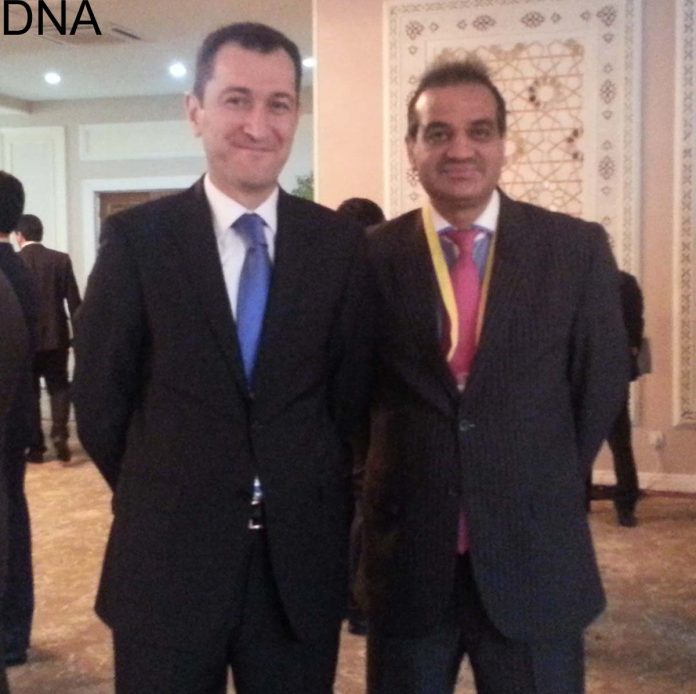ANSAR MAHMOOD BHATTI
International Water for Life conference that took place in the Tajik Capital, Dushanbe on June 9-11, 2015 was indeed a historic event for Tajikistan as prominent world leaders including the Prime Minister of Pakistan graced the occasion with the presence. The Tajik government had made elaborate arrangements for the facilitation of the delegates and participants alike. The event that continued for two days, ostensibly proved yet another feather in Tajikistan’s cap – a country which is constantly on the move after its independence.
On 23 December 2003, the United Nations General Assembly at its 58th session adopted resolution initiated by the Republic of Tajikistan. In accordance with the resolution, the period 2005 – 2015 was declared as the “International Decade for Action “Water for Life”. The main goal of the Decade was to promote efforts to fulfill international commitments made on water and water-related issues by the year 2015.
These commitments also included the development goals contained in the United Nations Millennium Declaration and particularly to halve the proportion of people without access to safe drinking water and basic sanitation. Another important goal of the Decade was to develop by 2015 plans for integrated water resource management and water-use efficiency in rendering assistance to developing countries.
Tajikistan is an energy-rich country that offers various solutions to those countries such as Pakistan, which are energy-deficient. Apart from the global impact of the water conference, its regional impacts too turn out to be stupendous. Besides Pakistan, Afghanistan was also represented in the conference at the highest level. Pakistan, Afghanistan and Tajikistan are key partners in the CASA 1000 energy project that is due to be completed by 2017. Once completed, this particular project will significantly contribute to decreasing of energy related issues both in Pakistan and Afghanistan that are faced with serious energy crisis these days.
As planned in this project Pakistan will get 1000 MW electricity from Tajikistan. Electricity shall be transmitted to Pakistan through transmission lines starting from grid stations in Tajikistan and ending up at grid stations in Peshawar. Of course, the transmission line will pass through Afghanistan for which the contract is already signed and its installation is likely to complete in about a year. The project’s importance and significance can be gauged from that fact that Russia and India too have shown their interest to join this project.
I had the opportunity of visiting Tajikistan to attend the International Water Conference and thus gained a firsthand knowledge of what Tajikistan had done in the field of energy. It was a unique experience to see even public transport running on electricity in the capital Dushanbe – which is rightly called the Green Capital of Central Asia. Besides developing its energy resources, the Tajik government spearheaded by President Emomali Rahmon, devotes tremendous attention towards beautification of the country and its capital is an exquisite example of this endeavor. The international event undoubtedly improved the credentials of Dushanbe.
Summing up, the International Water Conference, among other things, provided both Pakistan and Tajikistan to further strengthen their cooperation. Prime Minister Nawaz Sharif expressed his utmost satisfaction over the trip hoping such high level contacts with the Tajik leadership would continue even in the coming days. Likewise, the way the Tajik leadership received the Pakistan prime minister and his team and hospitality extended to them during their stay in Dushanbe, is a clear manifestation of a strong desire and interest on the part of the Tajik government to solidify its relations with Pakistan.
It is also pertinent to make a mention of services of Tajikistan’s Ambassador to Pakistan, Sherali Jononov whose untiring efforts towards cementing the bilateral relations finally yielded results and this high level interaction between the heads of governments could take place. Ambassador Sherali is quite optimistic about more and more such high level contacts between the two countries. He genuinely wants to bring peoples of both sides closer besides building government to government contacts. As it goes, everything is possible for a willing horse, so let us cross our fingers for Ambassador Sherali for all his future endeavors.










